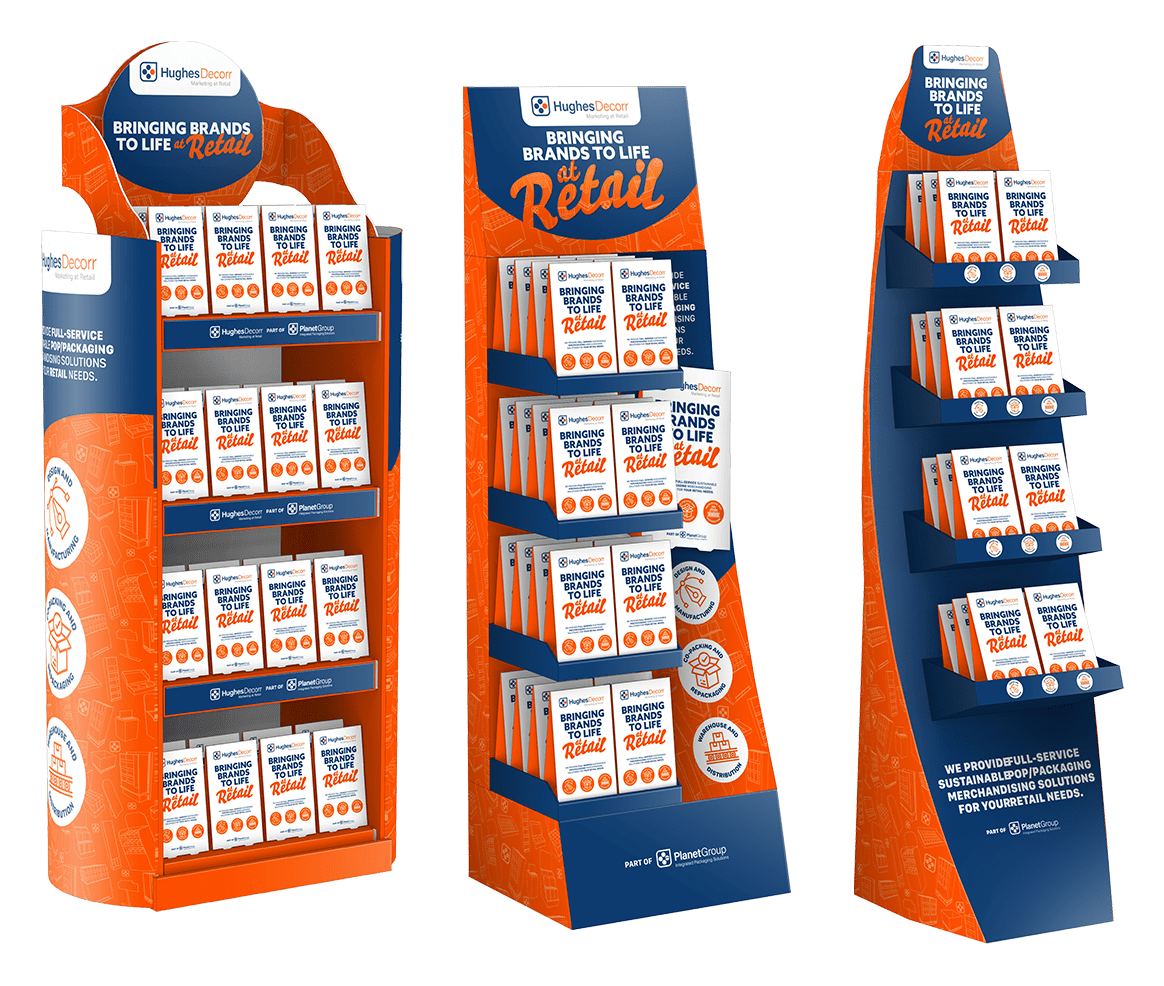The Consumer Packaged Goods (CPG) industry operates in a fiercely competitive landscape. As a result, brands must innovate continuously to capture shopper attention. For example, standing out on crowded shelves while meeting evolving consumer demands presents challenges that are as varied as they are complex. However, at Hughes Decorr, we deeply understand these retail marketing challenges for CPG brands. Therefore, we offer tailored solutions designed to help them thrive in this dynamic environment.

The Key Challenges Facing CPG Brands in Retail:
Shelf Competition
With multiple brands vying for attention in the same retail space, creating differentiation is paramount. CPG products need to stand out not only through packaging but also via impactful point-of-purchase (POP) displays that capture shopper interest at a glance.
Consumer Behavior Shifts
Today’s consumers are informed and selective, often seeking brands that align with their values, whether it’s sustainability, innovation, or quality. CPG brands need to convey these attributes effectively to win consumer trust.
Supply Chain Complexities
Managing product placement, restocking, and maintaining consistency across locations is a logistical challenge. Delays or inefficiencies can disrupt the shopper’s experience and affect brand perception.
Rapid Retail Evolution
The retail landscape is continuously shifting, driven by digital transformation, emerging technologies, and changing shopper expectations. Brands must adapt quickly to remain relevant and effective.

Hughes Decorr Solutions: Bringing Brands to Life at Retail
At Hughes Decorr, we address these challenges with innovative, client-centric solutions designed to deliver impact, efficiency, and value.
1. Eye-Catching POP Displays
Our customized POP displays are designed to captivate shoppers, elevate brand messaging, and drive sales. With a focus on creativity and functionality, we help brands create a lasting impression in the retail environment.
2. Purposeful Design and Sustainability
We understand the importance of aligning with consumer values. That’s why our designs emphasize sustainability without compromising on quality. Through our “Planet Approved” platform, we ensure that environmentally responsible practices are integrated into every project.
3. Supply Chain Integration
Our Single-Source Solutions simplifiy the complexities of retail logistics. From manufacturing and warehousing to assembly and delivery, Hughes Decorr ensures that every aspect of the supply chain operates seamlessly.
4. Digital Printing and Advanced Technology
Leveraging advanced digital printing and cutting-edge technology, we provide vibrant, high-quality solutions that help brands communicate their stories effectively.

Case Study: Success in the CPG Space
One of our recent projects involved designing and delivering a high-impact POS display for a leading CPG brand. By combining bold visuals with strategic placement, we increased shopper engagement by 25% and boosted sales during the campaign period. Our streamlined process also reduced setup time, ensuring efficiency for retail partners.

Why Partner with Hughes Decorr?
Hughes Decorr isn’t just a vendor; we’re a strategic partner committed to “Bringing Brands to Life at Retail.” Our team combines expertise in design, engineering, and marketing to deliver solutions that address today’s challenges while preparing for tomorrow’s opportunities.

Looking Ahead: Transforming Challenges into Opportunities
The CPG industry continues to evolve rapidly. Consequently, staying ahead requires embracing both innovation and adaptability. At Hughes Decorr, we remain committed to empowering brands with tools and strategies designed to address current challenges effectively. Furthermore, we aim to unlock new growth opportunities, ensuring long-term success in a dynamic market.
Are you ready to elevate your Retail Marketing Challenges for CPG Brands Strategy? Let’s collaborate to create solutions that make your brand stand out and resonate with shoppers.
Visit Hughes Decorr to learn more about our expertise and how we can help your brand thrive in today’s competitive retail environment.










